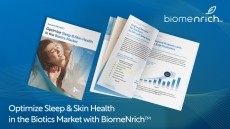National Animal Supplement Council president breaks down the dos and don’ts of pet supps
This content item was originally published on www.nutraingredients-usa.com, a William Reed online publication.
Like dietary supplements for humans, understanding the nuances of regulations, labeling, manufacturing and technical considerations in -biotic applications for pets is crucial.
Bill Bookout, president and founder of the National Animal Supplement Council (NASC), sat down with Nutraingredients-USA in Salt Lake City to shed light on some of the distinctive requirements for pet supplementation.
Bookout explained that pet supplements can fall into two categories: a nutritional supplement or a health supplement.
“A nutritional supplement would be a supplement that would be intended to make a nutritional contribution to an animal as a component of a complete balanced diet. Or we have a product for a health benefit like a calming product or a joint product or a liver kidney product with ingredients that would not be utilized for nutritional benefits, but would support a structure/function benefit.”
When making claims, Bookout said structure/function claims can be made for either a nutritional supplement or a health supplement. Using probiotics as an example, he explained that if a structure/function claim is scientifically substantiated, proven, not false or misleading and nutritionally linked, then you can make that claim.
“For example, probiotics support the proper metabolism of nutrients in the gastrointestinal tract which maintains a strong and healthy immune system–that's a structure/function claim linked to nutrition and you can make that claim for a probiotic or a biotic product in a food product.
“If it was occasional diarrhea or anything about diarrhea, then that would be a claim for a health benefit, as opposed to a claim that would be to diagnose, prevent, treat here which is not allowable to help with IBD for example.”
Bookout added that while the demand for research is there, companies have to be careful about how they utilize it.
“Everybody wants research, but how can you use the research, right? So maybe you have a research study that shows a product is beneficial for helping with IBD or arthritis or chronic pain relief. If you connect that research to the commercialization of a product, then that's considered a claim associated with the product and you can run into regulatory issues with that, whether it's state regulators or FDA at the federal level. So my best advice on research is to disconnect it from commercial activity,” said Bookout. “The two-click rule is not a written rule or written policy, but the further away you can make it, the better off you are.”















